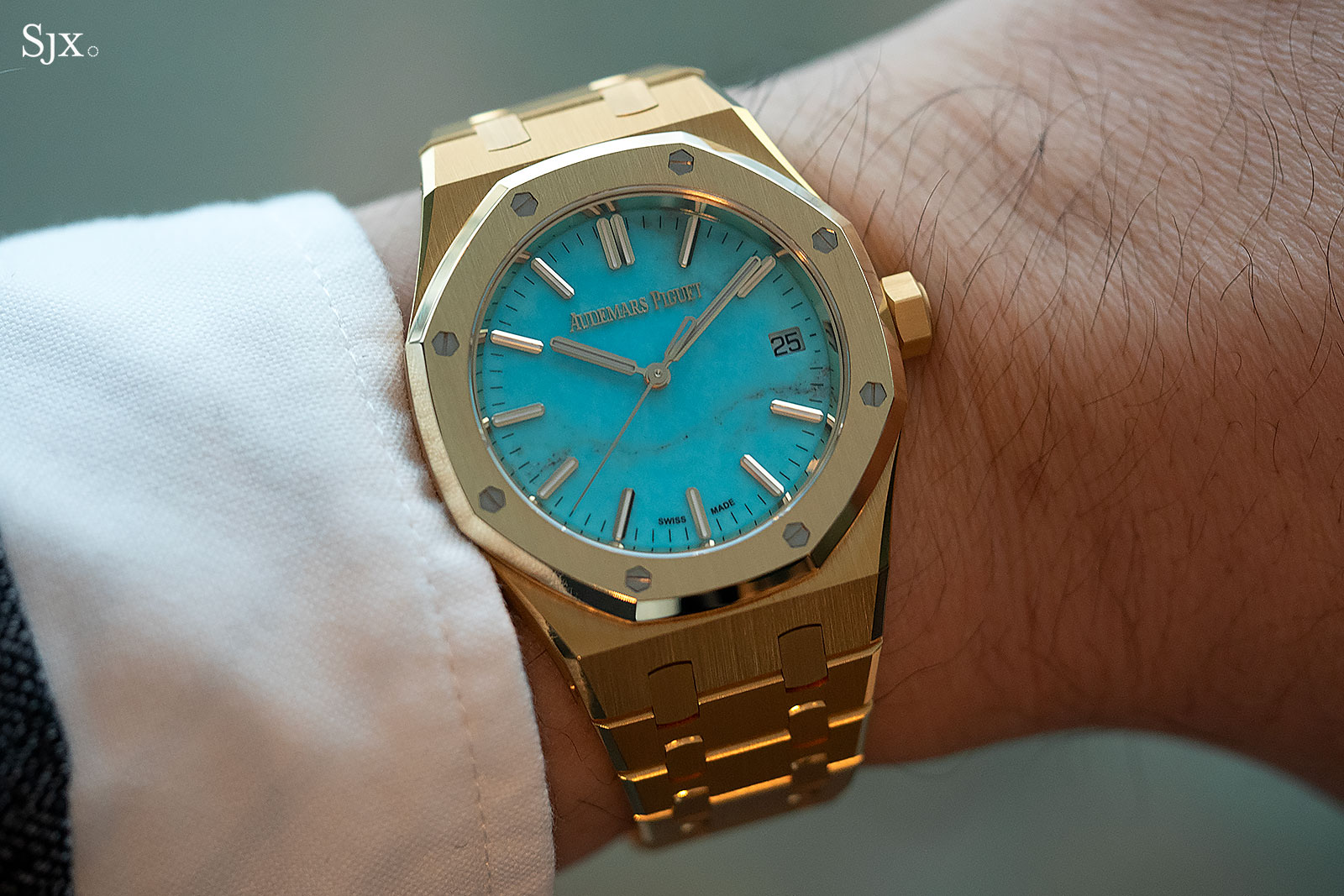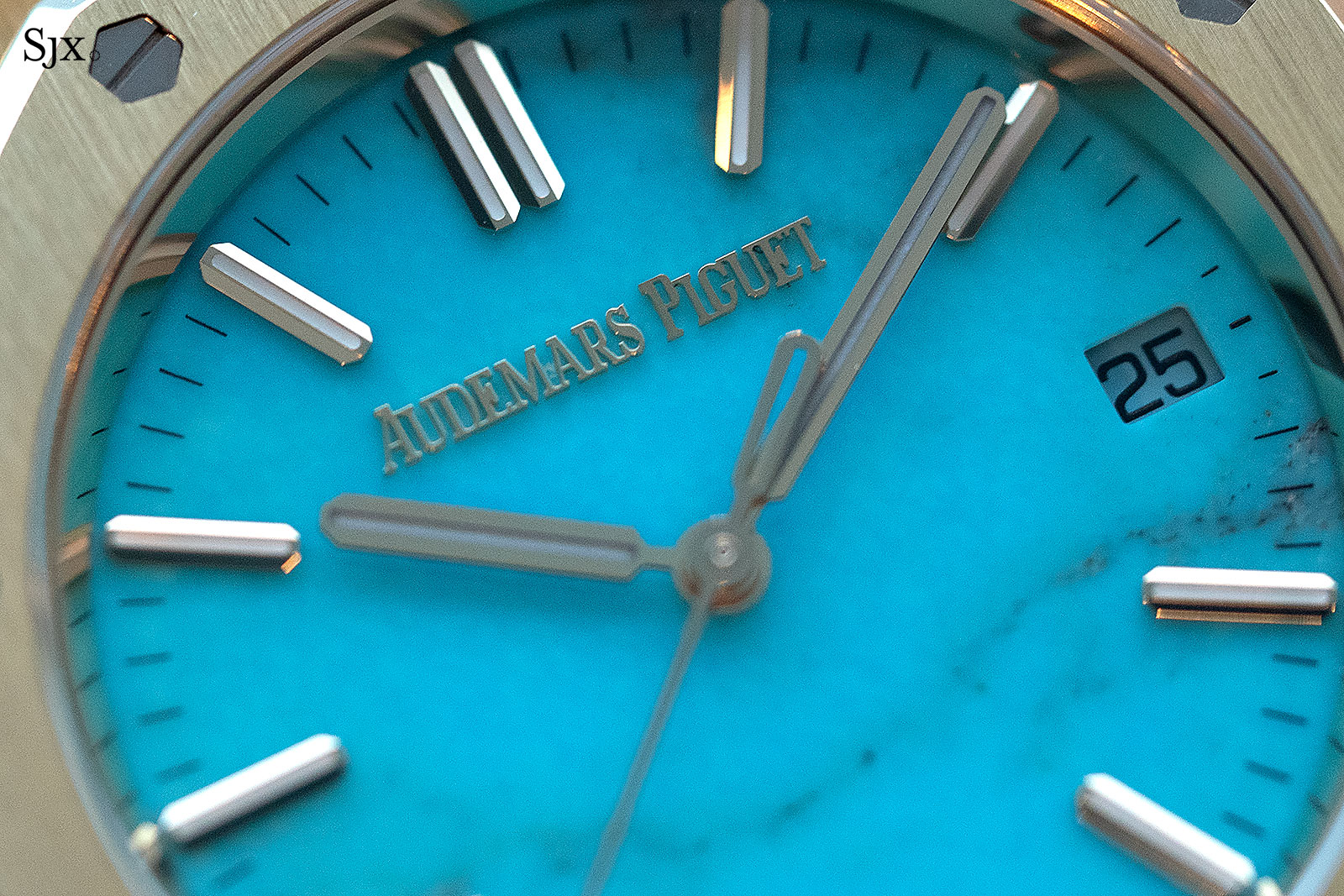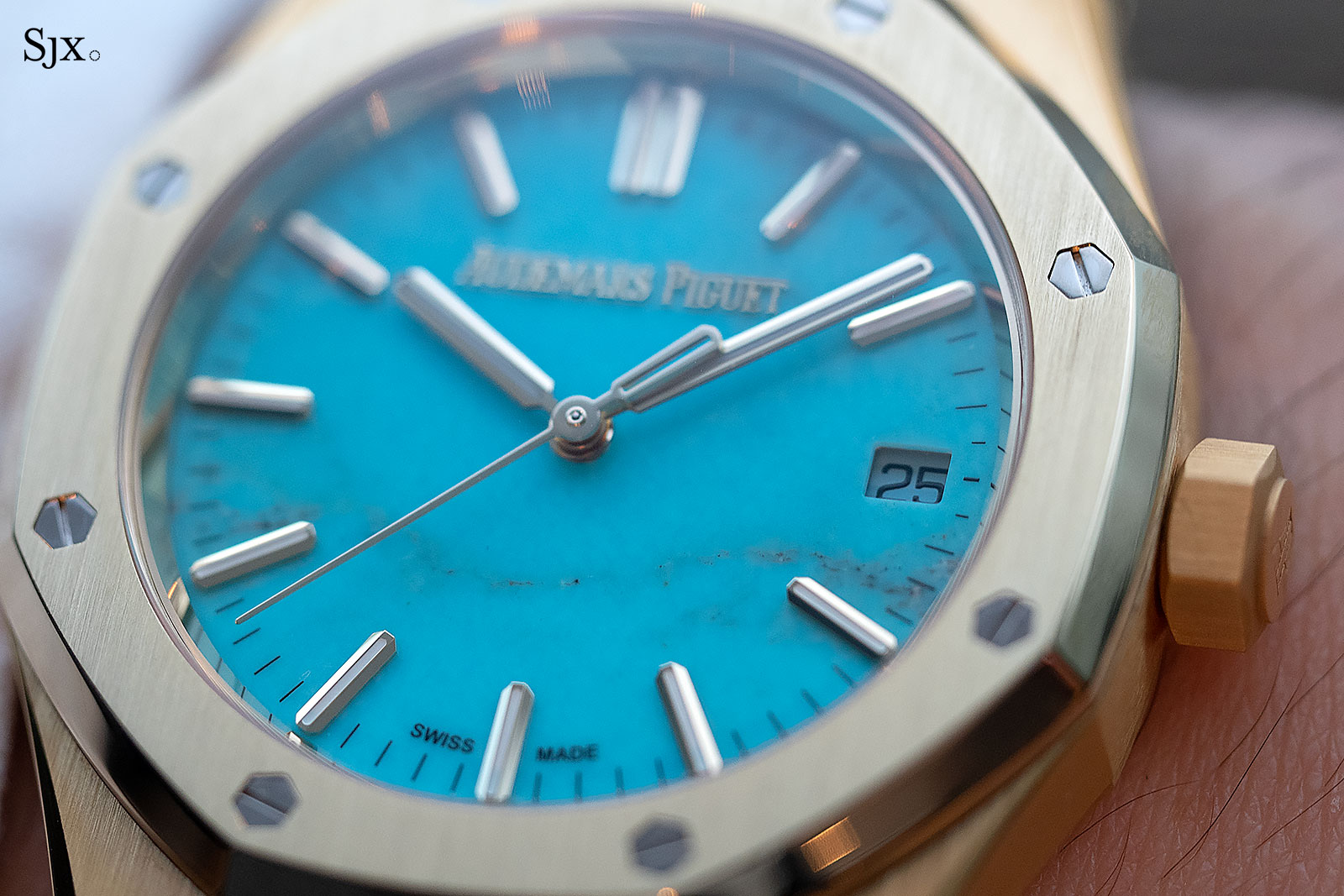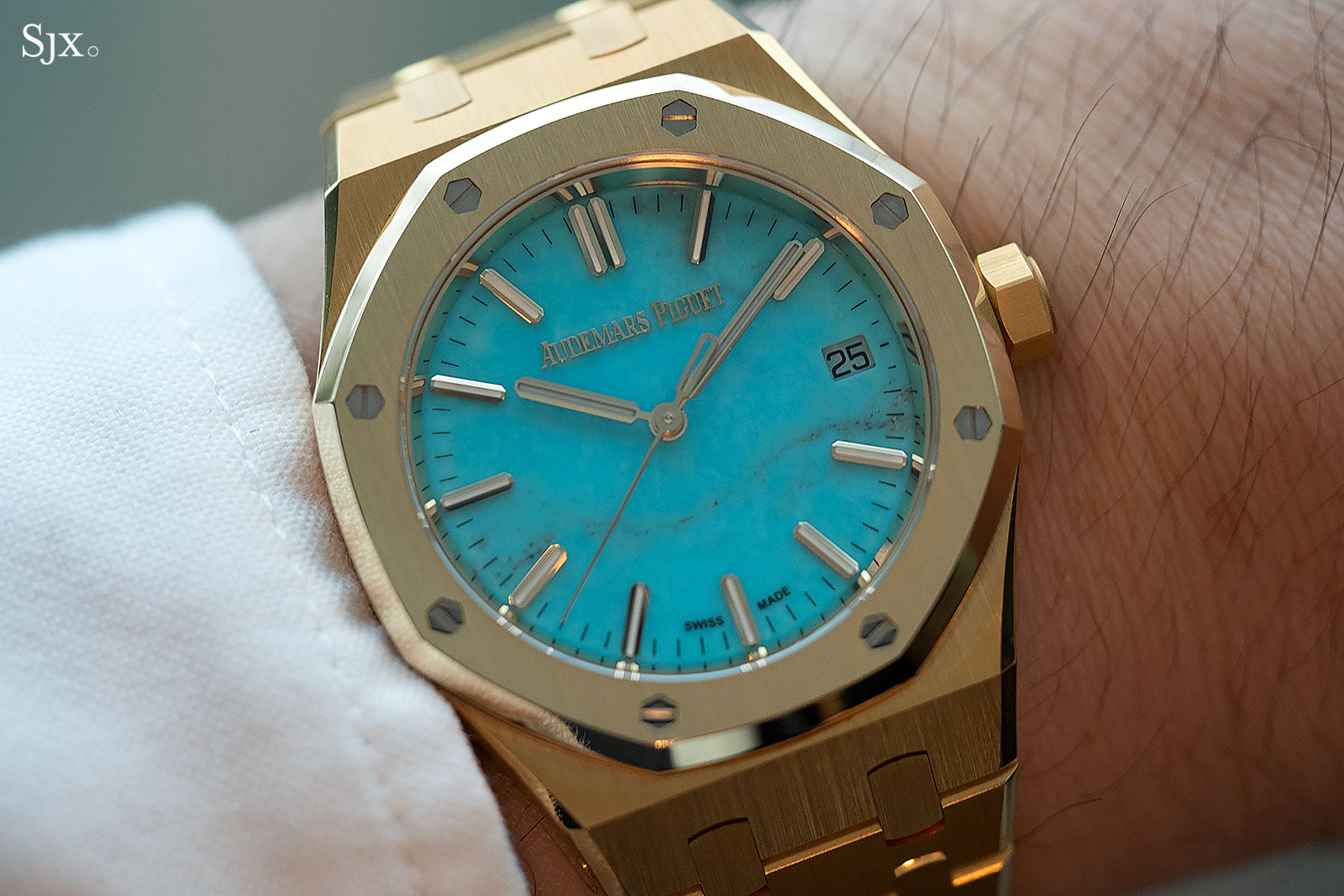Hands On: Audemars Piguet Royal Oak 37 mm Turquoise Dial
A throwback to stone dials of the past.
Audemars Piguet (AP) just launched over a dozen new models, ranging from the Royal Oak “Jumbo” with a grained dial to the first Offshore Chronograph with a ceramic bracelet. But one stands out despite being the smallest watch amongst the new launches. Dressed in yellow gold and a striking stone dial, the Royal Oak Selfwinding 37 mm Turquoise Dial is a throwback back to an earlier era when the Royal Oak was offered with a range of mineral stone dials.
Initial thoughts
Though relatively common in the 1970s and 1980s when stone dials were a thing, the turquoise-yellow gold combination is unusual today. But it has a certain timelessness so the combination remains attractive. In fact, it even feels current, a testament to the longevity of the Royal Oak design (and the current fad for robin-egg blue dials).
The watch is intrinsically attractive in its design and palette. The design is simple – almost minimalist in Royal Oak terms – but the watch has presence due to its colours. It is vibrant and loud, very much the opposite of, say the new “Jumbo” in white gold, which is decidedly low key in comparison.
One element I wish was different is the seconds hand – I would have preferred a two-hand dial as on the vintage Royal Oak models with stone dials. That simplicity would further accentuate the dial material.

The case does feel slightly small for a modern men’s watch. It is an acceptable size, but the dimensions of the model means it feels slightly smaller than it is (unlike the “Jumbo” that feels larger than its 39 mm diameter). The size, combined with the stone dial, gives it a retro feel, making it feel almost like a remake of a 1990s Royal Oak.
Still, it is a handsome, compact watch that costs CHF51,000, which is a reasonable proposition by Royal Oak standards. Naturally, the waitlist for this will be long, but it is certainly a compelling buy.
As an aside, the choice of turquoise versus any other mineral stone is almost certainly catering to the popularity of the colour, driven in large part by Patek Philippe’s limited-edition Nautilus for Tiffany & Co. It appears to be a smart move to boost the appeal of the mid-sized Royal Oak, which presumably doesn’t have the same draw as its larger or smaller counterparts.
Bringing back semiprecious stone
Mineral stone dials were popular in the two decades from the 1960s and are often found on assorted ultra-thin AP dress watches from the period, though Royal Oaks with stone dials are less common. The new Royal Oak is reminiscent of its historical counterparts, which were almost all mid-sized models with similar dimensions.

A Royal Oak ref. 14701BC from 1993 with a bloodstone dial and 36 mm case. Image – Phillips
Interestingly, while vintage Royal Oaks can be found with a variety of stone dial, turquoise is novel for the model. According to AP, the turquoise used here is slightly darker than usual and is characterised by faint veining.
Originating in Mexico – the stone was prized in ancient Mesoamerican culture – the turquoise used for the dial is processed in the usual manner for such dials. It’s first sliced into a flat disc, then polished with several techniques, the last of which is lapping with a fine abrasive paste to give it a glossy surface. Then the turquoise disc is secured to a brass base with adhesive, giving it strength and durability.

Impressively, almost all the elements on the dial are applied and secured with feet, which requires tiny holes to be drilled into the stone – a delicate process that often leads to cracks.
As is standard for the Royal Oak, the applied hour markers, hands, as well as the AP logo are solid 18k gold. Besides the solid-gold elements, the dial has a printed minute scale and discreet date at three with the date disc in a matching blue hue. As a result, the dial is clean, allowing the natural grain of the stone to take centerstage.

The case is 18k yellow gold, an unusual metal for the current Royal Oak line-up where rose gold dominates, but a perfect fit for the dial colour and retro style of the watch.
The case design incorporates the tweaks first seen on Royal Oak 50th Anniversary models that debuted last year, including wider bevels on the edges of the case, as well as a more pronounced taper of the bracelet. These changes give the watch a slightly more defined outline.
Inside the case is the cal. 5900, one of AP’s latest-generation in-house movements. First seen last year in the Royal Oak 37 mm ref. 15550, the cal. 5900 is a compact movement with the typical features of the brand’s newest in-house calibres, namely a useful 60-hour power reserve and a free-sprung balance secured by a full bridge.

Key facts and price
Audemars Piguet Royal Oak Selfwinding 37 mm Turquoise Dial
Ref. 15550BA.OO.1356BA.01
Diameter: 37 mm
Height: 8.9 mm
Material: 18k yellow gold
Crystal: Sapphire
Water resistance: 50 m
Movement: Cal. 5900
Functions: Hours, minutes, seconds, and date
Winding: Self-winding
Frequency: 28,800 beats per hour (4 Hz)
Power reserve: 60 hours
Strap: 18k gold bracelet with folding clasp
Limited edition: No
Availability: At AP boutiques and AP Houses
Price: CHF51,000 before taxes
For more, visit Audemarspiguet.com.
Back to top.








